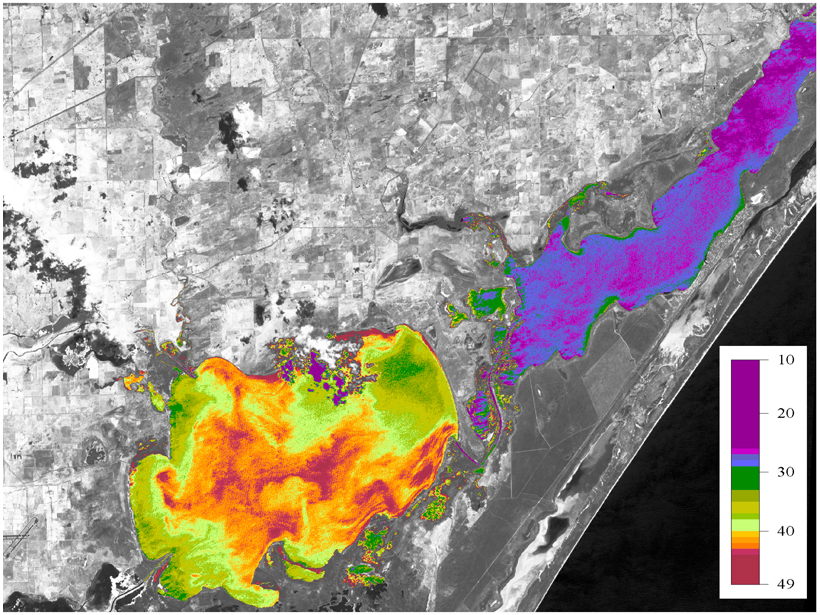Access to healthy water is a key condition to alleviate poverty.
Measuring, understanding, and predicting inland water quality are global concerns as anthropogenic effects proliferate and climate change causes alterations to the hydrological cycle. Access to healthy water is a key condition to alleviate poverty. Yet neither developed nor developing countries are able to sample all inland water bodies around the globe.
Monitoring water quality has traditionally been a local or regional activity. However, there is a growing realization that Earth observations applied globally to assess inland water quality may provide a solution to regional or transboundary problems. Advances in Earth observation enable quantitative assessments of water quality variables such as chlorophyll, cyanobacteria, and suspended solids. Improvements in algorithms, processing, sensor technology, and data accessibility have demonstrated the efficacy of Earth observation water quality applications at regional scales.

The Group on Earth Observations (GEO) Coastal and Inland Water Quality Working Group met in Geneva, Switzerland, last April for a water quality summit. Scientists from 18 countries and multiple international organizations, government agencies, nonprofits, academia, and the private sector participated. The goal was to define Earth observation–based water quality assessment requirements globally and to develop a plan to implement an integrated water quality monitoring and forecasting service.
Participants focused on a range of Earth observation water quality services, from data generation to products, information, decision-making tools, and stakeholder feedback. “Data” was defined as in situ samples and raw measurements from satellite sensors. The scientists in attendance identified 25 water quality products based on Earth observation services across the Americas, Europe, Africa, Asia, and Australia, each differing in duration and level of resourcing. These products included measurements of chlorophyll, cyanobacterial pigments, suspended solids, colored dissolved organic matter, transparency, turbidity, and other pollutants.
The group produced a draft 10-year strategic plan for developing water quality assessment products to be used globally. The products would include those mentioned above, as well as more integrated products, such as those calculating a water quality index, a eutrophication index, primary productivity (production of chemical energy by organisms), and an aquatic carbon budget. They would be designed for use by local, regional, and national water quality managers, as well as continental- and global-scale organizations, such as the United Nations and the international development banks.
The summit participants also advocated implementing a GEO Water Quality Community of Practice that would complement GEO initiatives such as Blue Planet, the Biodiversity Observation Network, and GeoHealth. The long-term aim is to develop a global water quality and forecasting service.
Summit documents can be viewed at the GEO Water Quality website.
—Arnold G. Dekker, Earth Observation and Informatics Future Science Platform, Commonwealth Scientific and Industrial Research Organisation, Canberra, ACT, Australia; email: [email protected]; Blake A. Schaeffer, Office of Research and Development, Environmental Protection Agency, Durham, N.C.; and Steve Greb, Fisheries and Aquatic Sciences Research, Wisconsin Department of Natural Resources, Madison
Citation: Dekker, A. G., B. A. Schaeffer, and S. Greb (2015), Toward a global water quality observing and forecasting system, Eos, 96, doi:10.1029/2015EO041095. Published on 11 December 2015.
Text © 2015. The authors. CC BY 3.0
Except where otherwise noted, images are subject to copyright. Any reuse without express permission from the copyright owner is prohibited.

